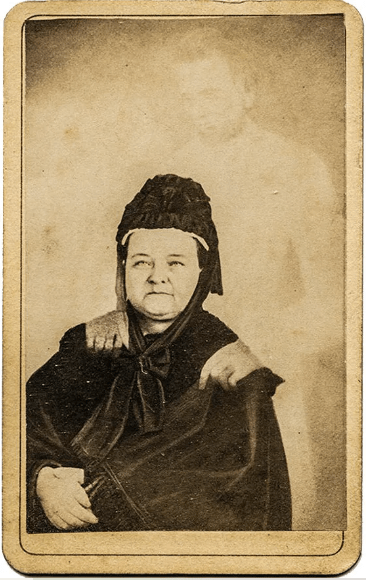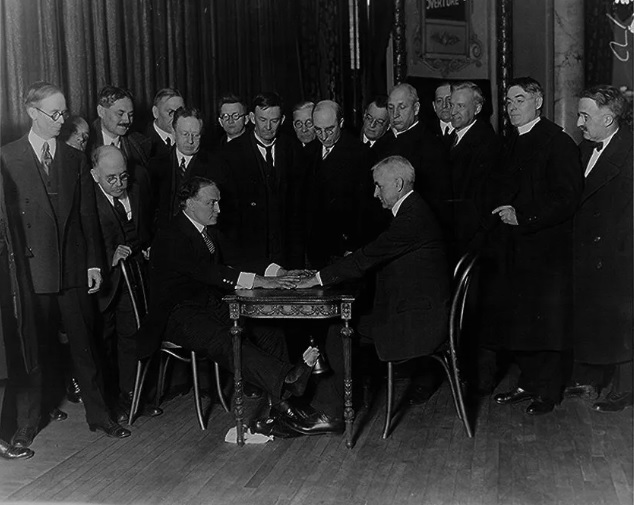Cover image from the film Dr. Mabuse (1922), directed by Fritz Lang. Photograph: Bettmann/Corbis
Because my novel Shores of Chaos: Darkness Follows takes place in 1902, I couldn’t help but include a séance scene. But séances were only a part of the much larger Spiritualism movement that started in the mid 19th century and lasted through the early 20th century. Spiritualism became more than just speaking with the dead; it became a religion unto itself.
The movement was believed to have started in 1848 when two sisters, Maggie and Catherine Fox, living in Hydesville, New York claimed that they could communicate with the dead. They said the spirits in their home would answer their questions through knocks and taps. The spirits followed the girls wherever they went and they soon started sharing their spirit communicating skills with audiences and during séances. Their popularity led many others to claim to hear spirits or that they were mediums who could communicate with the dead. Maggie Fox would later admit in 1888 that the entire thing was faked.1

Fox’s admission though did little to stifle Spiritualism. During the 1840s, the United States was ready for such a religious movement. People were beginning to see Heaven as a more comforting place where their deceased loved ones lived. This shift in beliefs happened in tandem with the discovery of new fossils and the study of the earth’s geological record which shook people’s earlier religious ideas. Spiritualism was also appealing because it could provide tangible proof if contact was made with spirits, allowed one to practice how they preferred, and gave women more equality. Women would use Spiritualism as a way to push their own political beliefs as they could claim their ideas came from the dead.3 There were mediums who channeled minority and disenfranchised groups as well, often for their own political agendas.1

Another reason for the movement’s growth was the large numbers of dead. The high mortality rate of young children lead parents to want to communicate with their departed kids.1 The Civil War also caused millions of people to join the movement as they sought closure from their relatives who had died in battle, especially if their bodies were never returned home. A similar effect would happen following World War I.3 The rise of Spiritualism was also perpetuated by the famous people who took part in it. For example, Mary Todd Lincoln consulted with mediums, held séances, and even had spirit photographer, William H. Mumler, capture the “ghost” of Abraham Lincoln behind her. Others who took part in the movement included Arthur Conan Doyle, Queen Victoria, Frederick Douglass, and Mark Twain. New technologies also helped to boost the spread of spiritualism, particularly photography. Some photographers captured the deceased while others photographed séances and the appearance of ectoplasm. The desire to capture the spirit world passed onto other technologies as well such as radios and telephones, with famous inventors trying their hands at machines that could make connection with the spirit world.1
While Spiritualism garnered many believers, it also attracted many skeptics. William James who helped found the American Society for Psychical Research, debunked many cases except for that of Leonora Piper, who knew of his aunt’s death before he did.1 Famed escape artist Harry Houdini came to abhor mediums, believing they were frauds and that their practice was an insult to his own profession as they claimed to have supernatural powers when they did not and their tricks were less-than skillful. Houdini would clash with Arthur Conan Doyle over their opposing beliefs in Spiritualism. In 1922 Scientific American, a magazine headed by investigative journalists, offered a prize of $5000 to any medium who could prove they were able to make communication with the dead. Houdini joined a group of doctors, scientists, and mathematicians to test mediums’ claims for this competition. He helped to debunk many mediums including Mina Crandon who nearly won the prize. In 1926, he participated in congressional hearings to attempt to have fortune-telling as a business criminalized. During the hearings, Houdini showed the room of congressmen, mediums, and spectators how the spiritualists performed their tricks. Some thought Houdini was going too far and encroaching on the First Amendment and even blamed his Jewish heritage for trying to make a witch hunt. Others simply did not want science to interfere with their faith. After Houdini died on Halloween in 1926, his wife, Bess, held annual séances for ten years, and many others continue to do so till this day, hoping to have the magician communicate from the beyond, but true to his character, he never has.2

Modern psychologists believe there are a few reasons why people may have adhered to Spiritualism so well. For one, we tend to remember correct details given by mediums and overlook incorrect ones. They also think once people tend to frame something as paranormal, they don’t bother looking for other explanations. The darkness usually present during séances makes people more sensitive and frightened. Our bodies can also sometimes make involuntary movements, especially if we are thinking of something in particular, which can cause objects such as a planchette on a Ouija board to move.4 So where do you stand on Spiritualism? Do you believe the dead can come back to us or are other people, or even our own minds, playing tricks on us?
Sources
- “Why did so Many Victorians Try to Speak with the Dead?” By Casey Cep. May 24, 2021. The New Yorker. https://www.newyorker.com/magazine/2021/05/31/why-did-so-many-victorians-try-to-speak-with-the-dead
- “For Harry Houdini, Séances and Spiritualism Were Just an Illusion” by Bryan Greene. Oct. 28, 2021. Smithsonian Magazine. https://www.smithsonianmag.com/history/for-harry-houdini-seances-and-spiritualism-were-just-an-illusion-180978944/
- “Beyond the Veil: Spiritualism in the 19th Century” by Katie Keckeisen. https://www.austintexas.gov/sites/default/files/files/Parks/OHenry/spiritualism.pdf
- “The Psychology of Spiritualism: Science and Séances” by David Derbyshire. Oct. 19, 2013. https://www.theguardian.com/science/2013/oct/20/seances-and-science

